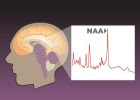Caríssimos AMICOR, como encerramos hoje o mês de junho e o primeiro semestre deste ano, no qual nosso Blog completa 19 anos - e também já tendo juntado muitas referências - resolvi antecipar o "elert" desta semana.
Abraço a todos com votos de um feliz segundo semestre.
AA
Retinal Cells implants
[image: Image shows a diagram of a fly brain.] Restoring Vision For Sufferers of Retinal Disorders NEUROSCIENCE NEWSJUNE 30, 2016 *Summary: Findings could pave the way for improving retinal implants and restoring vision to those with retinal disorders.* *Source: University of Sheffield.* *Engineers and neuroscientists have demonstrated for the first time that the cells in the retina carry out key processing tasks.* Engineers and neuroscientists at the University of Sheffield have demonstrated for the first time that the cells in the retina carry out key processing tasks. This could pav... mais »
Bdellovibrio
438 DAILY NEWS 23 June 2016 New life form discovered in saliva is linked to human disease [image: Attack of the microbes] Attack of the microbes Jeffrey S. McLean By Andy Coghlan Parasitic bacteria that are entirely dependent on the other bacteria they infect have been discovered for the first time, in human spit. The tiny cells have gone undetected for decades, but appear to be linked to gum disease, cystic fibrosis and antimicrobial resistance. We only know of one other strain of bacteria that can infect other bacteria, but this type, called *Bdellovibrio*, is a free-living cell th... mais »
Pâncreas Biônico
*Pâncreas Biônico* Uma equipe de pesquisadores da Universidade de Boston divulgou os resultados de um experimento bem-sucedido: o pâncreas artificial. Publicado no *New England Journal of Medicine*, o teste foi feito em pacientes com diabetes tipo 1 que receberam insulina e Glucagon (um hormônio que eleva os níveis de açúcar do sangue). Felizmente, o dispositivo superou as expectativas dos pesquisadores, pois funcionou muito bem ao regular automaticamente os níveis de açúcar do sangue (evitando sua queda), e nesse meio tempo ajustaram o aparelho para funcionar tanto em adultos quan... mais »
Depression in old age
Aloyzio AchuttiemAMICOR - Há 31 minutosVolume 3, No. 7, p593–595, July 2016 Comment Depression in old age—the first step to dementia? Simone Reppermund[image: email] Published Online: 29 April 2016 [image: Article has an altmetric score of 115] DOI: http://dx.doi.org/10.1016/S2215-0366(16)30022-0 Article Info - Summary - Full Text - Tables and Figures - References [image: First page of article] A better understanding of the link between depression and dementia is essential, given the rapid growth of the elderly population, with an anticipated doubling of global dementia prevalence every 20 years.1 In the *Lancet ... mais »
Comming back butter...
Why Butter Isn’t So Bad A new study found no link between eating butter and heart disease, going against longstanding advice to avoid butter because it contains saturated fat It looks like butter may, in fact, be back. The creamy condiment is a “middle-of-the-road” food, nutritionally speaking—better than sugar, worse than olive oil—according to a new report, which adds to a growing body of research showing that the low-fat-diet trend was misguided. The new study analyzed nine papers that included more than 600,000 people and concluded that consuming butter is not linked to a hi... mais »
Neuroscience of Bullying
Home Electrophysiology Motivation to Bully is Regulated by Brain’s Reward Circuits NEUROSCIENCE NEWSJUNE 29, 2016 *Summary: Researchers report bullying behavior activates primary reward circuits in the brain, making it a pleasurable behavior to a certain subset of individuals.* *Source: Mount Sinai Hospital.* *Individual differences in the motivation to engage in or to avoid aggressive social interaction (bullying) are mediated by the basal forebrain, lateral habenula circuit in the brain, according to a study conducted at the Icahn School of Medicine at Mount Sinai and published June ... mais »
Cannabinoids and AD
Cannabinoids May Reduce Alzheimer’s Proteins From Brain Cells NEUROSCIENCE NEWSJUNE 29, 2016 *Summary: A new study finds THC reduces amyloid beta proteins in human neurons.* *Source: Salk Institute.* *Preliminary lab studies at the Salk Institute find THC reduces beta amyloid proteins in human neurons.* Salk Institute scientists have found preliminary evidence that tetrahydrocannabinol (THC) and other compounds found in marijuana can promote the cellular removal of amyloid beta, a toxic protein associated with Alzheimer’s disease./.../
RANK
‘Holy grail’ of breast-cancer prevention in high-risk women may be in sight June 21, 2016 [image: Breast cancer prevention (credit: Walter and Eliza Hall Institute)] Australian researchers have discovered that an existing medication could have promise in preventing breast cancer in women carrying a faulty BRCA1 gene, who are at high risk of developing aggressive breast cancer. Currently, many women with this mutation choose surgical removal of breast tissue and ovaries to reduce their chance of developing breast and ovarian cancer. … more…
neuroscience
Brain markers of numeric, verbal, and spatial reasoning abilities found June 23, 2016 [image: A new study found that higher concentrations of NAA (N-acetyl aspartate) in the medial parietal and posterior cingulate cortices of the brain were associated with better performance on verbal and spatial tests. NAA is a byproduct of glucose metabolism and an indicator of brain health. (credit: Graphic by Julie McMahon and Erick Paul)] A new study helps explain how brain structure and chemistry relate to “fluid intelligence” — the ability to adapt to new situations and solve problems one has... mais »
Mosquitoes
VIDEO What makes mosquitoes so good at getting under our skin? 3 minutes
Metastasis
Unexpected discovery reveals secret of how cancer spreads in the body June 23, 2016 [image: primary tumor (credit: Barts Cancer Institute, QMUL)] Could help develop treatments to prevent metastasis (awesome animated video) Metastasis (spread of cancer) is one of the biggest challenges in cancer treatment. It is often not the original tumor that kills, but secondary growths. But a key question in cancer research has been how vulnerable cancer cells are able to survive once they break away from a tumor to spread around the body. “Metastasis …more…
Technologies 2016
The top 10 emerging technologies of 2016 June 23, 2016 [image: nanosensors] The World Economic Forum’s annual list of this year’s breakthrough technologies, published today, includes “socially aware” openAI, grid-scale energy storage, perovskite solar cells, and other technologies with the potential to “transform industries, improve lives, and safeguard the planet.” The WEF’s specific interest is to “close gaps in investment and regulation.” “Horizon scanning for emerging technologies is … more…
Exercise and Memory
How exercise improves memory June 24, 2016 [image: Exercise induces synthesis of a chemical called DBHB in the liver. In the hippocampus, DBHB induces Bdnf expression, which in turn has positive effects on memory, cognition and synaptic transmission. (credit: Sama F. Sleiman et al./eLife)] The hippocampus in the brain switches to fat as an energy source after glucose is depleted from exercise), leading to release of BDNF, associated with cognitive improvement. Researchers have found out how. Physical exercise after learning improves memory and memory traces if the exercise is done ... mais »
Retina Rods
Testing The Theory of How Rods in the Retina Originated NEUROSCIENCE NEWSJUNE 20, 2016 *Summary: A new study reports the retinas from our earliest vertebrate ancestors had cone like receptors, allowing them to see both in daylight and at night.* *Source: NIH/National Eye Institute.* *Genesis of our rod-dominant retina may explain ancestors’ survival through ‘nocturnal bottleneck’.* [image: Image shows rods and cones in the retina.] This is a confocal microscope image of rod and cone photoreceptors in a human retina. Fluorescent probes have been used to identify rod photoreceptors (gree... mais »
AD and Resveratrol
Combination Therapy May Hold The Key to Slowing Down Alzheimer’s NEUROSCIENCE NEWSJUNE 26, 2016 Combination therapy may hold the key to slowing down Alzheimer’s disease. NeuroscienceNews.com image is credited to Dr. Nady Braidy et al, Bentham Science Publishers. *Summary: A new study reports reveratrol could be a therapeutic candidate for the management and treatment of Alzheimer’s disease.* *Source: Bentham Science Publishers.* *Resveratrol is a naturally occurring polyphenolic phytochemical produced in several plants, especially grapes skin and seeds. One epidemiological study repo... mais »
Chronic Pain
Exploring the Epigenetic Influences of Chronic Pain NEUROSCIENCE NEWSJUNE 26, 2016 *Summary: According to new research, one protein can regulate the expression of a large number of genes that modulate pain.* *Source: Drexel University.* *Chronic pain is one of the most prevalent, disabling and expensive public health crises in the United States. It affects more than 100 million Americans, with annual costs estimated at $635 billion, says a 2014 report from the American Pain Society.* Despite the enormous societal impact of chronic pain, present treatment options are limited to nonstero...mais »
Academia SR Medicina e Tabagismo 2016
Academia de Medicina RS added 2 new photos. 5 hrs · Academia de Medicina do RS divulga manifesto sobre o Tabagismo 2016. Em texto que pode ser lido no link abaixo, o Prof. Luiz Carlos Corrêa da Silva adverte que o Governo não está fazendo sua parte na Convenção Quadro da Organização Mundial da Saúde. Destaca que a área a ser cultivável não está sendo gradualmente diminuída e substituída por outras culturas. A Indústria procura desacreditar a necessidade de mudanças na agricultura, substituindo-se o tabaco por outros produtos ... See More [image: Academia de Medicina RS's photo.] [image... mais »
Pronoia
'Pronoia' and other emotions you never knew you had By Melissa Dahl, Science of Us Updated 1315 GMT (2115 HKT) June 24, 2016 In recent years, neuroscience has introduced a new way of thinking about our emotions. The scientists behind the latest brain-imaging studies say they can now pinpoint with precision where these feelings are located within our heads. In 2013, for instance, a team of psychologistspublished a study in which they claimed that they had found neural correlates for nine very distinct human emotions: anger, disgust, envy, fear, happiness, lust, pride, sadness, and shame.













No comments:
Post a Comment